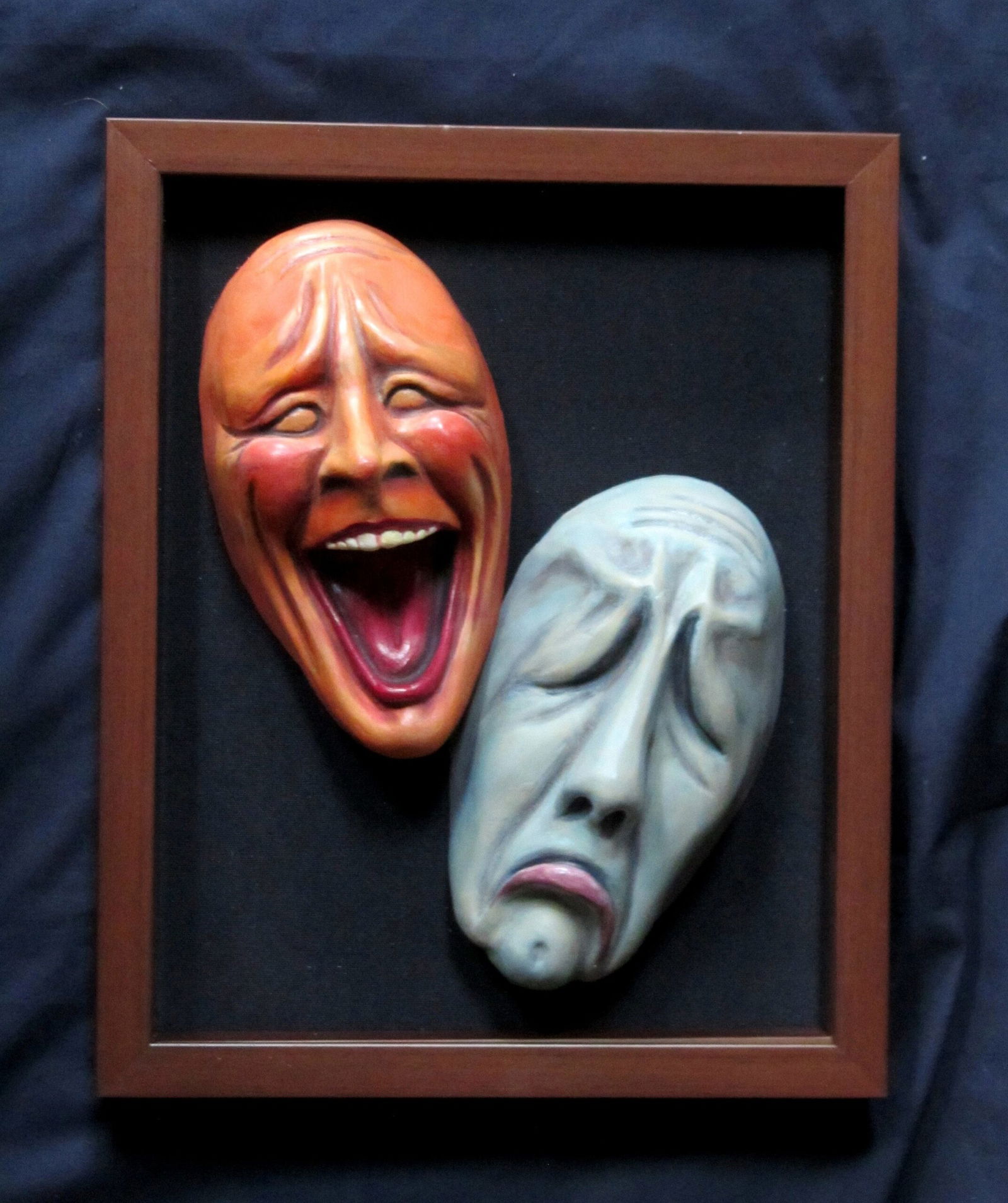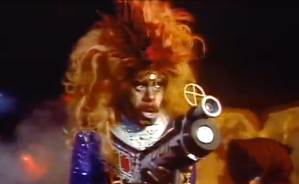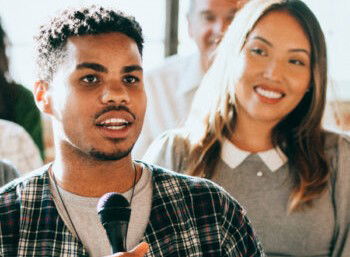How to Write Funnier JokesIn this joke writing article, How to Write Funnier Jokes: Tip 7 – Eliminate Comic Cliches, I’ll convince all comedians to extinguish all the hacky, trite, overused, tired, and stereotypical phrases and actions from stand-up comedy routines and shows.Previously in this series of joke writing articles, you learned How to Write Funnier Jokes: Tip 1 – Short Setups and Punchlines. How to Write Funnier Jokes: Tip 2 – End Punchlines with the Reveal. How to Write Funnier Jokes: Tip 3 – Use K-Words to Improve Punchlines. How to Write Funnier Jokes: Tip 4 – Localize Comedy Routines. How to Write Funnier Jokes: Tip 5 – Strong Punchlines are Negative. and How to Write Funnier Jokes: Tip 6 – Put Puns in Setups, to improve how to write funnier jokes to get the biggest laughs from your stand-up comedy routines.[image_with_animation image_url=”21332″ image_size=”full” animation_type=”entrance” animation=”None” animation_movement_type=”transform_y” hover_animation=”none” alignment=”right” border_radius=”5px” box_shadow=”none” image_loading=”default” max_width=”100%” max_width_mobile=”defaultThese Comic’s Cliches all fulfill some very important function in performing stand-up comedy. But instead of understanding that function and creating something original, too many comics adopt the cliches they’ve heard in other comic’s shows.
This mindless integration of these cliches is the fast track to Hackville for comics. They’ll assure all originality is masked by some hokey phrase or action that’ll eventually bury you in the piles of the forgotten.
Tip 7 – Eliminate Comic Cliches
I’m not addressing the cultural cliches, idioms, proverbs, slogans, and catchphrases. Those familiar sayings are the stock and trade for all funny people who know how to write funnier jokes.
The first step in eliminating these Comic Cliches is awareness. They are so entrenched in the stand-up comedy culture most comics aren’t even conscious they’re using so many in their comedy routines.
I cannot cover all of them in this article, so I’ll focus on the most egregious examples of these trite expressions.Audience Greetings
Greeting an audience at the beginning of your show is important and can set the right tone. Yet, too many comics, especially beginners, open with some slight variation on the comic’s cliche:
“How y’all doing tonight?”
I’m not here to point out the bad grammar, but to wonder why you’d want to start your show with the same hack phrase as almost everyone performing in the show.
I’ve been to shows, especially comedy school shows, where everyone that enters, including the MC, said, “How y’all doin’ tonight.” Even when the show was in the morning or afternoon. That’s how pervasive this verbal curse runs in the minds of the comedically impaired.
I wanted to ask, “Didn’t you notice the other thirty comics before you said the same greeting?” Comics all the time yap about having a unique sense of humor, then start their shows like all the other comics. Not a very convincing start.
I also want to know if you’ve ever been in the audience of a comedy show while awake? As an audience member we get fed up with comic after comic after comic after comic after comic after comic after comic after comic after comic after comic after comic after comic after comic after comic after comic after comic after comic after comic after comic after comic after comic after comic after comic after comic after comic after comic after comic who insist, we answer the same friggin question.
It’s as annoying as reading the previous sentence. Then in the next paragraph you’re forced to endure it all over again.
After the third one the audience wants to yell, “WE’RE FINE!” and we think, “I hope the next comic doesn’t start the same way.” But alas, we still have twenty-seven more times to hear the same obligatory dribble numbing our willingness to laugh. (And yes, there are 27 “comic after comic” in the previous paragraph. Just wanted you to suffer like the audience.)
This has such a simple fix. You do it almost every day. Introduce yourself. That’s it. Just do a version of what you do when you meet new people.
“Hi, I’m John Q Comic. Nice to meet you. Thanks for being here.”
And it doesn’t have to be the same greeting every time. With your original sense of humor and creativity, maybe you can ad-lib a new greeting for each new audience.
Just saying, “Hello,” even kindergarteners can do it, so why not mostly grown-up comics. But then again, it’s easier to use the same comic’s cliche as everyone else before starting your original comedy show.
Segues or Transitions
To compound the idiocy, segues and transitions are not needed in modern stand-up comedy. Every comedian can just start talking about something just because they’re a comic on a comedy stage. It seems unnatural at first, but you’ll get used to it and then notice how much easier it is to just start the next routine.
What has taken the place of transitions is the Premise. I have my own definition of a premise: a negative opinion about a subject. Yes, that’s it. Simple. What are you going to talk about and what is your position?
Here’s an example of a useless transition going wrong. I was watching a bringer show at the Ice House Annex Room, in Pasadena CA. Most of the comics had a few years of performing.
A comic, we’ll call Dick, started his show with, “Hi. How y’all doing?” so I expected the usual. Next, he asked a question as a way of bringing up the subject of his next routine, “How many people here have a phobia?”
This may seem like a reasonable way to start his routine, but there are several downsides. Like in that evening alone, the seven previous comics had asked a question as a means of introducing their topic or subject.
I’d already heard three times, “How many people here are married?” There had also been, “How many people here like ice cream?” Twice, “How many people here are in a relationship? “How many people here smoke pot?” “How many people here drink beer?” And “How many people here have had some bad sex?” From comic after comic after comic…
Back to my Dick story. He asked, “How many people here have a phobia?” Now this is where it can get dangerous for newbies. What you may not know is that if you invite someone into your show, there’s an unstated contract with the audience, that in the end, you’ll take care of this person. By asking a question, you’ve prompted someone to answer, hence unintentionally inviting them into your show.
In this audience, there was a sweet old lady this question set off her phobia alarm and she began to yammer, “Oh my goodness, I have a terrible fear of spiders. And this morning I found a spider on my refrigerator door, and I couldn’t go near it. I was hungry. But I couldn’t go near it. So, I had to call my grandson, Timmy, he’s such a good boy, to come over and get the spider out of my kitchen so I could cook–”
Dick only had three minutes of stage time and she’d already used up at least one. He rudely interrupted, “Yeah, yeah, that’s fine. Stop talking so I can do my show.” Unstated contract violated. The audience now hated Dick.
He went into his bit anyway with, “I have a fear of heights.” As I remember, he had some good jokes that would have gotten some solid laughs. But the audience’s animosity toward him was visceral. They weren’t going to laugh at anything because they were concerned about the feelings of the old lady.
Here’s how he could have avoided all this misfortune. If he’d started his routine by simply stating his premise, “I have a fear of heights.” Then moved right into his jokes. He probably would have had a really good set. But noooo. Instead, he began with the comic’s cliche of asking a question to bring up the topic about his phobia.
Of course, not every comic’s cliche is going to have such dire consequences, but it’s still sending you down the path already taken by comic after comic after comic after comic…
Here are a few more comic’s cliches to avoid:
“Have you ever noticed…?”
“A funny thing happened on my way here…?
“But seriously folks…”
“I don’t want to say…“
“Speaking of…”
“True story, I swear it…”
“Where are all of my (somebodies) at…?”
“Enjoying the show so far?”
If you want to know how to write funnier jokes, first get rid of the comic’s cliches.
Action cliches
These are some of the comic’s cliches that are not said, but rather done.
- Leaning one hand on the top of the mic stand.
- Pacing back and forth looking down at the floor.
- Leaning toward the audience to deliver a punchline.
- Clapping your hands between jokes.
- Picking up and smacking down the mic stand to indicate a punchline.
- Nodding “yes” when the audience is laughing.
- Picking up the mic stand instead of taking the mic out of the holder.
- Using the mic stand as a penis.
- Pretending the mic is a penis.
These aren’t all of them. Each generation seems to add a few more to the ever-growing ranks of the overused and derivative. Now that you’re aware of these comic’s cliches, notice the ones in your show and continue to find the ones in other comic’s shows. Then avoid them like unsafe sex.
Just by not writing these comic’s cliches you’re learning how to write funnier jokes because instead of relying on the tried and terrible, you’re striving to fulfill the functions with original comedy material. Or you can sound like comic after comic after comic after comic after comic after comic after comic after comic after comic after comic…
In this joke writing article, How to Write Funnier Jokes: Tip 7 – Eliminate Comic’s Cliches, you’ve been made aware of what comic’s cliches are and how they can adversely affect your brand as a stand-up comedian and the performances of your routines. Google comedy cliches and begin the eradication.
In the next stand-up comedy writing article, How to Write Funnier Jokes: Tip 8 – Use Specifics, I’ll show how using specifics is yet another way to know how to write funnier jokes.
Greg Dean’s Stand-Up Comedy Classes
Greg teaches his techniques in two classes. Level 1: How to Build a Stand Up Comedy Routine is the beginning class (also called the “101 class”) and the “Advanced Joke Writing & Performing at the Improv” (also known as the “201 class”).
Even though these classes are named a beginning and advanced, they are actually classes that stand up comedians of any number of years of experience can take. They are beginning and advanced in the Greg Dean system. If you’re interested in faster and better ways to create good jokes and you want to dive deeper on joke writing then you’ll want to take both of these classes.
Greg teaches his classes live in Santa Monica as well as live on zoom. If you are in the greater Los Angeles area, you can sign up for his classes at the Santa Monica Playhouse. Check our Calendar of Events to see all upcoming classes. Calendar of Events
In addition to his live classes in Santa Monica and on zoom, Greg also teaches joke writing via his on demand platform. One of his most popular classes is “Joke Writing Made Simple”. This class can be done in your own time, and at your own pace. You can find out more about this class.
Free How to Build a Stand-Up Comedy Routine Webinar
You’ll Get Exposed to Joke Structure and Several Other Stand Up Comedy Techniques that Could Make Your Stand Up Comedy Routines Better









